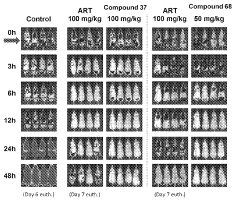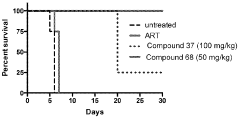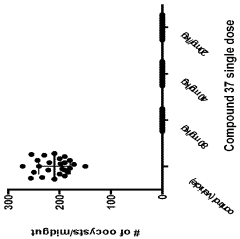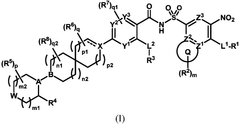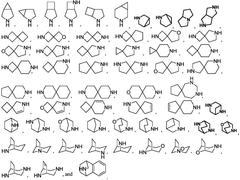Geometric Isomers in Renewable Energy Systems: Challenges and Solutions
AUG 1, 20259 MIN READ
Generate Your Research Report Instantly with AI Agent
Patsnap Eureka helps you evaluate technical feasibility & market potential.
Geometric Isomers in Renewable Energy: Background and Objectives
Geometric isomers have emerged as a critical area of study in the realm of renewable energy systems, presenting both challenges and opportunities for technological advancement. The exploration of these molecular structures has gained significant traction over the past decade, driven by the urgent need for more efficient and sustainable energy solutions. This research aims to comprehensively examine the role of geometric isomers in various renewable energy applications, with a particular focus on their potential to enhance energy conversion and storage processes.
The evolution of renewable energy technologies has been marked by continuous efforts to improve efficiency and reduce environmental impact. Geometric isomers, with their unique spatial arrangements of atoms, offer promising avenues for optimizing energy-related chemical reactions and material properties. From photovoltaic cells to biofuels, the manipulation of molecular geometry has shown potential for breakthrough innovations in energy harvesting and utilization.
As we delve into this field, it is crucial to understand the fundamental principles governing geometric isomerization and their implications for energy systems. The interplay between molecular structure and energy transfer mechanisms forms the cornerstone of this research, guiding our exploration of novel materials and processes. By leveraging the distinct properties of geometric isomers, researchers aim to overcome existing limitations in renewable energy technologies and pave the way for next-generation solutions.
The primary objective of this investigation is to elucidate the challenges associated with harnessing geometric isomers in renewable energy applications and to propose innovative solutions to these obstacles. This encompasses a multifaceted approach, including the development of new synthesis methods, the optimization of isomer-based materials, and the integration of these compounds into existing energy systems.
Furthermore, this research seeks to identify and evaluate emerging trends in the utilization of geometric isomers across various renewable energy sectors. By analyzing current technological trajectories and market demands, we aim to forecast future developments and potential breakthroughs in this field. This forward-looking perspective will provide valuable insights for strategic planning and resource allocation in both academic and industrial contexts.
Ultimately, the goal is to contribute to the advancement of sustainable energy technologies by unlocking the full potential of geometric isomers. Through a comprehensive examination of their properties, applications, and challenges, this study aims to lay the groundwork for transformative innovations in renewable energy systems, fostering a more sustainable and efficient energy landscape for future generations.
The evolution of renewable energy technologies has been marked by continuous efforts to improve efficiency and reduce environmental impact. Geometric isomers, with their unique spatial arrangements of atoms, offer promising avenues for optimizing energy-related chemical reactions and material properties. From photovoltaic cells to biofuels, the manipulation of molecular geometry has shown potential for breakthrough innovations in energy harvesting and utilization.
As we delve into this field, it is crucial to understand the fundamental principles governing geometric isomerization and their implications for energy systems. The interplay between molecular structure and energy transfer mechanisms forms the cornerstone of this research, guiding our exploration of novel materials and processes. By leveraging the distinct properties of geometric isomers, researchers aim to overcome existing limitations in renewable energy technologies and pave the way for next-generation solutions.
The primary objective of this investigation is to elucidate the challenges associated with harnessing geometric isomers in renewable energy applications and to propose innovative solutions to these obstacles. This encompasses a multifaceted approach, including the development of new synthesis methods, the optimization of isomer-based materials, and the integration of these compounds into existing energy systems.
Furthermore, this research seeks to identify and evaluate emerging trends in the utilization of geometric isomers across various renewable energy sectors. By analyzing current technological trajectories and market demands, we aim to forecast future developments and potential breakthroughs in this field. This forward-looking perspective will provide valuable insights for strategic planning and resource allocation in both academic and industrial contexts.
Ultimately, the goal is to contribute to the advancement of sustainable energy technologies by unlocking the full potential of geometric isomers. Through a comprehensive examination of their properties, applications, and challenges, this study aims to lay the groundwork for transformative innovations in renewable energy systems, fostering a more sustainable and efficient energy landscape for future generations.
Market Analysis for Isomer-Based Renewable Energy Solutions
The market for isomer-based renewable energy solutions is experiencing significant growth, driven by the increasing global demand for sustainable and efficient energy sources. Geometric isomers, with their unique structural properties, offer promising opportunities in various renewable energy applications, particularly in solar energy conversion and energy storage systems.
In the solar energy sector, geometric isomers play a crucial role in enhancing the efficiency of photovoltaic cells. The market for isomer-based solar technologies is expected to expand rapidly, as these materials can potentially increase solar cell efficiency beyond the current limitations of traditional silicon-based cells. This growth is further supported by the declining costs of solar panel production and installation, making solar energy increasingly competitive with conventional energy sources.
The energy storage market is another key area where isomer-based solutions are gaining traction. Geometric isomers are being explored for their potential in improving the performance of batteries and other energy storage devices. This segment of the market is particularly promising, given the growing need for efficient energy storage solutions to complement intermittent renewable energy sources like solar and wind power.
The automotive industry represents a significant market opportunity for isomer-based renewable energy solutions. As electric vehicles (EVs) become more prevalent, there is a growing demand for advanced battery technologies that can offer longer range and faster charging times. Isomer-based materials have the potential to address these challenges, potentially revolutionizing the EV battery market.
Geographically, the market for isomer-based renewable energy solutions is seeing strong growth in regions with high renewable energy adoption rates. Europe, particularly countries like Germany and Denmark, is at the forefront of this market due to their ambitious renewable energy targets and supportive policy frameworks. In Asia, China and Japan are emerging as key markets, driven by their substantial investments in renewable energy research and development.
The market is characterized by intense competition among established energy companies, innovative startups, and research institutions. Collaborations between industry and academia are becoming increasingly common, accelerating the pace of innovation in this field. However, the market also faces challenges, including the need for further technological advancements to improve the stability and scalability of isomer-based solutions.
Overall, the market for isomer-based renewable energy solutions shows strong growth potential, with increasing investments in research and development expected to drive further innovations and market expansion in the coming years. As the technology matures and production costs decrease, these solutions are likely to play an increasingly important role in the global transition towards sustainable energy systems.
In the solar energy sector, geometric isomers play a crucial role in enhancing the efficiency of photovoltaic cells. The market for isomer-based solar technologies is expected to expand rapidly, as these materials can potentially increase solar cell efficiency beyond the current limitations of traditional silicon-based cells. This growth is further supported by the declining costs of solar panel production and installation, making solar energy increasingly competitive with conventional energy sources.
The energy storage market is another key area where isomer-based solutions are gaining traction. Geometric isomers are being explored for their potential in improving the performance of batteries and other energy storage devices. This segment of the market is particularly promising, given the growing need for efficient energy storage solutions to complement intermittent renewable energy sources like solar and wind power.
The automotive industry represents a significant market opportunity for isomer-based renewable energy solutions. As electric vehicles (EVs) become more prevalent, there is a growing demand for advanced battery technologies that can offer longer range and faster charging times. Isomer-based materials have the potential to address these challenges, potentially revolutionizing the EV battery market.
Geographically, the market for isomer-based renewable energy solutions is seeing strong growth in regions with high renewable energy adoption rates. Europe, particularly countries like Germany and Denmark, is at the forefront of this market due to their ambitious renewable energy targets and supportive policy frameworks. In Asia, China and Japan are emerging as key markets, driven by their substantial investments in renewable energy research and development.
The market is characterized by intense competition among established energy companies, innovative startups, and research institutions. Collaborations between industry and academia are becoming increasingly common, accelerating the pace of innovation in this field. However, the market also faces challenges, including the need for further technological advancements to improve the stability and scalability of isomer-based solutions.
Overall, the market for isomer-based renewable energy solutions shows strong growth potential, with increasing investments in research and development expected to drive further innovations and market expansion in the coming years. As the technology matures and production costs decrease, these solutions are likely to play an increasingly important role in the global transition towards sustainable energy systems.
Current Challenges in Geometric Isomer Utilization
The utilization of geometric isomers in renewable energy systems faces several significant challenges that hinder their widespread adoption and optimal performance. One of the primary obstacles is the difficulty in controlling and maintaining the desired isomeric configuration during synthesis and application processes. Geometric isomers can interconvert under certain conditions, such as exposure to heat or light, leading to a loss of their specific properties and reducing overall system efficiency.
Another major challenge lies in the scalability of production methods for specific geometric isomers. While laboratory-scale synthesis may yield high purity and controlled isomeric ratios, translating these processes to industrial-scale production often results in decreased selectivity and increased formation of unwanted byproducts. This scalability issue significantly impacts the cost-effectiveness and commercial viability of geometric isomer-based renewable energy technologies.
The stability of geometric isomers under operational conditions poses yet another hurdle. Many renewable energy systems operate under harsh environments, including high temperatures, intense light exposure, and varying pH levels. These conditions can trigger isomerization or degradation of the geometric isomers, compromising their long-term performance and reliability in energy conversion or storage applications.
Furthermore, the integration of geometric isomers into existing renewable energy technologies presents compatibility challenges. Adapting current systems to accommodate the unique properties of geometric isomers often requires significant modifications to equipment, processes, and materials. This integration complexity can lead to increased costs and technical barriers, slowing down the adoption of geometric isomer-based solutions in the renewable energy sector.
The characterization and quality control of geometric isomers in renewable energy systems also present substantial challenges. Accurate and rapid analytical methods for determining isomeric composition and purity are crucial for ensuring consistent performance. However, developing robust and cost-effective techniques for real-time monitoring and quality assurance of geometric isomers in operational environments remains a significant technical challenge.
Lastly, the environmental impact and safety considerations of geometric isomers used in renewable energy applications require careful evaluation. Some isomers may exhibit different toxicological profiles or environmental persistence compared to their counterparts. Addressing these concerns through comprehensive risk assessments and developing appropriate handling and disposal protocols are essential for the sustainable implementation of geometric isomer-based technologies in the renewable energy sector.
Another major challenge lies in the scalability of production methods for specific geometric isomers. While laboratory-scale synthesis may yield high purity and controlled isomeric ratios, translating these processes to industrial-scale production often results in decreased selectivity and increased formation of unwanted byproducts. This scalability issue significantly impacts the cost-effectiveness and commercial viability of geometric isomer-based renewable energy technologies.
The stability of geometric isomers under operational conditions poses yet another hurdle. Many renewable energy systems operate under harsh environments, including high temperatures, intense light exposure, and varying pH levels. These conditions can trigger isomerization or degradation of the geometric isomers, compromising their long-term performance and reliability in energy conversion or storage applications.
Furthermore, the integration of geometric isomers into existing renewable energy technologies presents compatibility challenges. Adapting current systems to accommodate the unique properties of geometric isomers often requires significant modifications to equipment, processes, and materials. This integration complexity can lead to increased costs and technical barriers, slowing down the adoption of geometric isomer-based solutions in the renewable energy sector.
The characterization and quality control of geometric isomers in renewable energy systems also present substantial challenges. Accurate and rapid analytical methods for determining isomeric composition and purity are crucial for ensuring consistent performance. However, developing robust and cost-effective techniques for real-time monitoring and quality assurance of geometric isomers in operational environments remains a significant technical challenge.
Lastly, the environmental impact and safety considerations of geometric isomers used in renewable energy applications require careful evaluation. Some isomers may exhibit different toxicological profiles or environmental persistence compared to their counterparts. Addressing these concerns through comprehensive risk assessments and developing appropriate handling and disposal protocols are essential for the sustainable implementation of geometric isomer-based technologies in the renewable energy sector.
Existing Solutions for Harnessing Geometric Isomers
01 Synthesis and separation of geometric isomers
Methods for synthesizing and separating geometric isomers, including techniques for controlling the formation of specific isomers during chemical reactions and processes for isolating desired isomers from mixtures. This may involve the use of catalysts, specific reaction conditions, or separation techniques such as chromatography.- Synthesis and separation of geometric isomers: Methods for synthesizing and separating geometric isomers, including techniques for controlling the formation of specific isomers during chemical reactions and purification processes to isolate desired isomers from mixtures.
- Characterization and analysis of geometric isomers: Techniques for identifying and analyzing geometric isomers, including spectroscopic methods, chromatography, and computational approaches to determine molecular structures and distinguish between different isomeric forms.
- Applications of geometric isomers in pharmaceuticals: Utilization of geometric isomers in drug development and pharmaceutical formulations, focusing on the different biological activities and therapeutic effects of various isomeric forms of active compounds.
- Geometric isomers in materials science and engineering: Exploration of geometric isomers in the development of advanced materials, including their role in determining physical properties, optical characteristics, and potential applications in fields such as electronics and nanotechnology.
- Computational modeling and prediction of geometric isomers: Development and application of computational methods for modeling geometric isomers, predicting their properties, and simulating their behavior in various chemical and biological systems.
02 Characterization and analysis of geometric isomers
Techniques for identifying and analyzing geometric isomers, including spectroscopic methods, X-ray crystallography, and computational modeling. These methods help determine the spatial arrangement of atoms in molecules and distinguish between different geometric isomers.Expand Specific Solutions03 Applications of geometric isomers in pharmaceuticals
The use of specific geometric isomers in drug development and pharmaceutical formulations. This includes the study of how different isomers affect drug efficacy, bioavailability, and side effects, as well as methods for producing and purifying pharmaceutically relevant isomers.Expand Specific Solutions04 Geometric isomers in materials science and engineering
The role of geometric isomers in the development of new materials with specific properties. This includes the design of polymers, liquid crystals, and other advanced materials where the spatial arrangement of molecules influences macroscopic properties.Expand Specific Solutions05 Computational methods for studying geometric isomers
The use of computational techniques to predict, model, and analyze geometric isomers. This includes quantum chemical calculations, molecular dynamics simulations, and machine learning approaches for understanding isomer properties and behavior.Expand Specific Solutions
Key Players in Isomer-Based Renewable Energy Technologies
The field of geometric isomers in renewable energy systems is in a nascent stage of development, characterized by emerging technologies and growing market potential. The competitive landscape is diverse, with players from various sectors contributing to advancements. Companies like State Grid Corp. of China, DuPont de Nemours, and LG Chem are leveraging their expertise in energy and materials to explore applications. Research institutions such as MIT, Southeast University, and Tianjin University are driving fundamental research. The market size is expanding as renewable energy adoption increases globally. However, the technology's maturity varies, with some applications still in early research phases while others are approaching commercialization. Collaboration between industry and academia is crucial for overcoming technical challenges and accelerating innovation in this promising field.
Dow Global Technologies LLC
Technical Solution: Dow Global Technologies has made significant contributions to addressing geometric isomers in renewable energy systems through their materials science expertise. They have developed advanced polymer systems with controlled geometric isomerism for use in solar panel encapsulants, improving durability and light transmission[15]. Dow's research in the field of wind energy has led to the creation of composite materials with optimized geometric isomer distributions, enhancing the strength-to-weight ratio of wind turbine blades[16]. In the area of energy storage, Dow has pioneered the use of silicon-based anode materials with specific geometric isomers that allow for higher capacity and better cycle life in lithium-ion batteries[17]. Their work in hydrogen fuel cells includes the development of proton exchange membranes with precisely controlled isomeric structures, improving conductivity and reducing gas crossover[18].
Strengths: Broad materials science expertise, strong intellectual property portfolio, global manufacturing capabilities. Weaknesses: Potential challenges in rapidly adapting to emerging renewable energy technologies, competition from more specialized companies in specific sectors.
Commissariat à l´énergie atomique et aux énergies Alternatives
Technical Solution: The Commissariat à l´énergie atomique et aux énergies Alternatives (CEA) has developed innovative approaches to address geometric isomers in renewable energy systems. Their research focuses on the synthesis and characterization of novel materials with controlled isomeric structures for enhanced energy conversion efficiency. CEA has pioneered the use of advanced spectroscopic techniques to identify and quantify geometric isomers in photovoltaic materials, enabling the optimization of solar cell performance[1]. They have also developed computational models to predict the behavior of geometric isomers in energy storage systems, particularly in lithium-ion batteries, leading to improved electrode designs[2]. CEA's work extends to the field of biofuels, where they have engineered enzymes capable of selectively producing specific geometric isomers of fatty acids for more efficient biodiesel production[3].
Strengths: Cutting-edge research facilities, multidisciplinary approach, strong government support. Weaknesses: Potential bureaucratic constraints, limited commercial focus compared to private sector companies.
Breakthrough Innovations in Isomer Energy Conversion
Compounds and methods for the treatment of malaria
PatentInactiveIN202118043692A
Innovation
- Development of specific compounds, such as those represented by Formula I and listed in Table 1, which offer new structural features and functional groups to target malaria parasites effectively, including those resistant to existing drugs.
Compounds as BCL-2 inhibitors
PatentWO2023078398A1
Innovation
- Recognition and utilization of geometric isomers (E/Z configurations) in BCL-2 inhibitor compounds, potentially affecting their efficacy and properties.
- Consideration of cis/trans configurations in cycloalkyl or heterocycloalkyl substituents, which may influence the compound's three-dimensional structure and activity.
- Acknowledgment of asymmetrically substituted carbon atoms (R/S configurations) in the compounds, potentially leading to different biological activities.
Environmental Impact Assessment of Isomer-Based Energy
The environmental impact assessment of isomer-based energy systems is a critical component in evaluating the sustainability and long-term viability of these renewable energy solutions. Geometric isomers, with their unique structural properties, offer potential advantages in energy generation and storage. However, their implementation also raises important environmental considerations that must be carefully examined.
One of the primary environmental benefits of isomer-based energy systems is their potential to reduce greenhouse gas emissions compared to traditional fossil fuel-based energy sources. By harnessing the energy stored in molecular bonds, these systems can provide clean, renewable power without direct carbon dioxide emissions during operation. This aspect aligns well with global efforts to mitigate climate change and transition towards more sustainable energy solutions.
However, the production and manufacturing processes of isomer-based energy systems may have environmental implications that need to be addressed. The synthesis of specific geometric isomers often requires complex chemical processes, which may involve the use of solvents, catalysts, and other reagents. The environmental impact of these production methods, including potential chemical waste and energy consumption, must be carefully assessed and minimized through the development of greener synthesis routes and more efficient manufacturing techniques.
The life cycle analysis of isomer-based energy systems is another crucial aspect of their environmental impact assessment. This includes evaluating the environmental footprint of raw material extraction, manufacturing, transportation, installation, operation, and eventual decommissioning or recycling of these systems. Understanding the full life cycle impacts can help identify areas for improvement and ensure that the overall environmental benefits outweigh any potential drawbacks.
Water usage and land requirements are additional factors to consider in the environmental assessment of isomer-based energy systems. Depending on the specific implementation, these systems may require water for cooling or other operational processes. The impact on local water resources and ecosystems must be evaluated, particularly in water-stressed regions. Similarly, the land use implications of large-scale isomer-based energy installations should be assessed, considering potential effects on biodiversity and habitat preservation.
The potential for environmental contamination in the event of system failures or accidents is another important consideration. While isomer-based energy systems are generally considered safe, the release of certain isomers or associated chemicals into the environment could have ecological consequences. Robust safety measures, containment systems, and emergency response protocols must be developed and implemented to mitigate these risks.
Lastly, the end-of-life management and recyclability of isomer-based energy systems components should be factored into the environmental impact assessment. Developing efficient recycling processes for spent materials and ensuring proper disposal of non-recyclable components are essential for minimizing the long-term environmental footprint of these technologies.
One of the primary environmental benefits of isomer-based energy systems is their potential to reduce greenhouse gas emissions compared to traditional fossil fuel-based energy sources. By harnessing the energy stored in molecular bonds, these systems can provide clean, renewable power without direct carbon dioxide emissions during operation. This aspect aligns well with global efforts to mitigate climate change and transition towards more sustainable energy solutions.
However, the production and manufacturing processes of isomer-based energy systems may have environmental implications that need to be addressed. The synthesis of specific geometric isomers often requires complex chemical processes, which may involve the use of solvents, catalysts, and other reagents. The environmental impact of these production methods, including potential chemical waste and energy consumption, must be carefully assessed and minimized through the development of greener synthesis routes and more efficient manufacturing techniques.
The life cycle analysis of isomer-based energy systems is another crucial aspect of their environmental impact assessment. This includes evaluating the environmental footprint of raw material extraction, manufacturing, transportation, installation, operation, and eventual decommissioning or recycling of these systems. Understanding the full life cycle impacts can help identify areas for improvement and ensure that the overall environmental benefits outweigh any potential drawbacks.
Water usage and land requirements are additional factors to consider in the environmental assessment of isomer-based energy systems. Depending on the specific implementation, these systems may require water for cooling or other operational processes. The impact on local water resources and ecosystems must be evaluated, particularly in water-stressed regions. Similarly, the land use implications of large-scale isomer-based energy installations should be assessed, considering potential effects on biodiversity and habitat preservation.
The potential for environmental contamination in the event of system failures or accidents is another important consideration. While isomer-based energy systems are generally considered safe, the release of certain isomers or associated chemicals into the environment could have ecological consequences. Robust safety measures, containment systems, and emergency response protocols must be developed and implemented to mitigate these risks.
Lastly, the end-of-life management and recyclability of isomer-based energy systems components should be factored into the environmental impact assessment. Developing efficient recycling processes for spent materials and ensuring proper disposal of non-recyclable components are essential for minimizing the long-term environmental footprint of these technologies.
Regulatory Framework for Novel Renewable Energy Technologies
The regulatory framework for novel renewable energy technologies, particularly those involving geometric isomers, is a complex and evolving landscape. As these innovative systems emerge, policymakers and regulatory bodies are tasked with developing appropriate guidelines that balance technological advancement with safety, environmental protection, and economic considerations.
At the international level, organizations such as the International Renewable Energy Agency (IRENA) and the United Nations Framework Convention on Climate Change (UNFCCC) play crucial roles in shaping overarching policies. These bodies provide frameworks that individual countries can adapt to their specific needs and circumstances. The Paris Agreement, for instance, has been a significant driver for countries to accelerate their renewable energy adoption, including novel technologies.
National regulatory bodies, such as the Department of Energy (DOE) in the United States or the European Commission's Directorate-General for Energy in the EU, are responsible for developing and implementing specific regulations. These agencies often work in collaboration with research institutions and industry stakeholders to ensure that regulations are both scientifically sound and practically feasible.
For geometric isomers in renewable energy systems, regulatory frameworks must address several key areas. These include safety standards for production and handling of isomeric compounds, environmental impact assessments, and performance criteria for energy conversion efficiency. Additionally, regulations need to cover aspects such as storage, transportation, and disposal of these materials.
One of the challenges in regulating novel technologies is the need for flexibility. Regulatory frameworks must be adaptable to accommodate rapid technological advancements while maintaining rigorous safety and environmental standards. This often requires a balance between prescriptive regulations and performance-based standards that allow for innovation.
Intellectual property rights also play a significant role in the regulatory landscape. Patent laws and licensing agreements must be carefully considered to encourage innovation while ensuring fair market competition. This is particularly important for geometric isomer technologies, where subtle molecular differences can lead to significant performance variations.
As the field of geometric isomers in renewable energy systems continues to evolve, regulatory bodies are likely to face ongoing challenges. These may include addressing potential environmental impacts, ensuring grid integration compatibility, and managing the lifecycle of these novel materials. Continuous dialogue between researchers, industry leaders, and policymakers will be essential to develop effective and responsive regulatory frameworks that support the growth of this promising technology while safeguarding public and environmental interests.
At the international level, organizations such as the International Renewable Energy Agency (IRENA) and the United Nations Framework Convention on Climate Change (UNFCCC) play crucial roles in shaping overarching policies. These bodies provide frameworks that individual countries can adapt to their specific needs and circumstances. The Paris Agreement, for instance, has been a significant driver for countries to accelerate their renewable energy adoption, including novel technologies.
National regulatory bodies, such as the Department of Energy (DOE) in the United States or the European Commission's Directorate-General for Energy in the EU, are responsible for developing and implementing specific regulations. These agencies often work in collaboration with research institutions and industry stakeholders to ensure that regulations are both scientifically sound and practically feasible.
For geometric isomers in renewable energy systems, regulatory frameworks must address several key areas. These include safety standards for production and handling of isomeric compounds, environmental impact assessments, and performance criteria for energy conversion efficiency. Additionally, regulations need to cover aspects such as storage, transportation, and disposal of these materials.
One of the challenges in regulating novel technologies is the need for flexibility. Regulatory frameworks must be adaptable to accommodate rapid technological advancements while maintaining rigorous safety and environmental standards. This often requires a balance between prescriptive regulations and performance-based standards that allow for innovation.
Intellectual property rights also play a significant role in the regulatory landscape. Patent laws and licensing agreements must be carefully considered to encourage innovation while ensuring fair market competition. This is particularly important for geometric isomer technologies, where subtle molecular differences can lead to significant performance variations.
As the field of geometric isomers in renewable energy systems continues to evolve, regulatory bodies are likely to face ongoing challenges. These may include addressing potential environmental impacts, ensuring grid integration compatibility, and managing the lifecycle of these novel materials. Continuous dialogue between researchers, industry leaders, and policymakers will be essential to develop effective and responsive regulatory frameworks that support the growth of this promising technology while safeguarding public and environmental interests.
Unlock deeper insights with Patsnap Eureka Quick Research — get a full tech report to explore trends and direct your research. Try now!
Generate Your Research Report Instantly with AI Agent
Supercharge your innovation with Patsnap Eureka AI Agent Platform!
